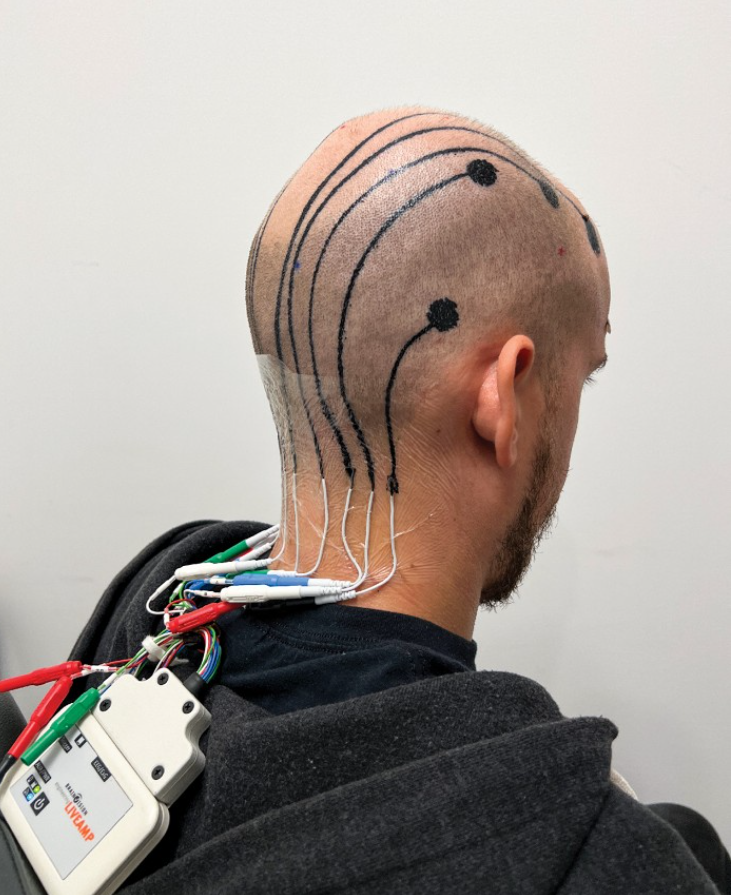Measuring brain waves could become easier with electrodes and wires that researchers can paint on the scalp through parted hair using a paintbrush. Made with a conductive polymer ink, the micrometer-thin painted films stick strongly to the skin for up to 3 days, and then peel off, leaving hair intact.
This makes them especially promising for pediatric studies, says Nanshu Lu, a professor of engineering at the University of Texas at Austin, who presented the advance on April 8 in Seattle at the 2025 Materials Research Society spring meeting.
The paintable electrodes work just as well as the complicated electroencephalography (EEG) sensors used today to monitor the brain for research and for clinical applications. Those sensors involve metal electrodes attached to the scalp using a conductive paste or worn in a device like a shower cap: neither option is comfortable for hours.
Last year, Lu and her colleagues concocted an ink for printing EEG electrodes and wires on the scalp using a microjet printer (Cell Biomater. 2024, DOI: 10.1016/j.celbio.2024.100004). They dissolved the widely used conductive polymer poly(3,4-ethylenedioxythiophene):poly, known as PEDOT:PSS, in water and added glycerol as a plasticizer to make the polymer soft and stretchy.
Skin is hydrophilic, but hair is hydrophobic, so the water-based electrodes and wires stick tightly to skin but come off hair easily when rubbed with an alcohol wipe, Lu says. “As long as you don’t shower, they are compatible with sleep, helmets, and mild sweating. If our subject is playing soccer in Texas summer, then it’s a problem.”
The team’s jet-printing method works only on closely shaved heads. For compatibility with long hair, the researchers have now added polyvinyl alcohol to make a viscous ink that can be painted manually with a brush on the scalp. They have also added citric acid to promote adhesion because it forms hydrogen bonds with lipids and proteins in the skin, she says. Hand-painting the electrodes and wires and then drying them with a hair dryer takes a total of around 25 min, she says, after which they can accurately measure brain signals for up to 72 h.
This is a practical, cost-effective, and user-friendly solution for long-term, high-quality EEG monitoring, says Shiming Zhang of the University of Hong Kong. “This technology has strong potential for clinical applications.”
Reposted from Chemical and Engineering news: Hand-paintable electrodes to study the brain


